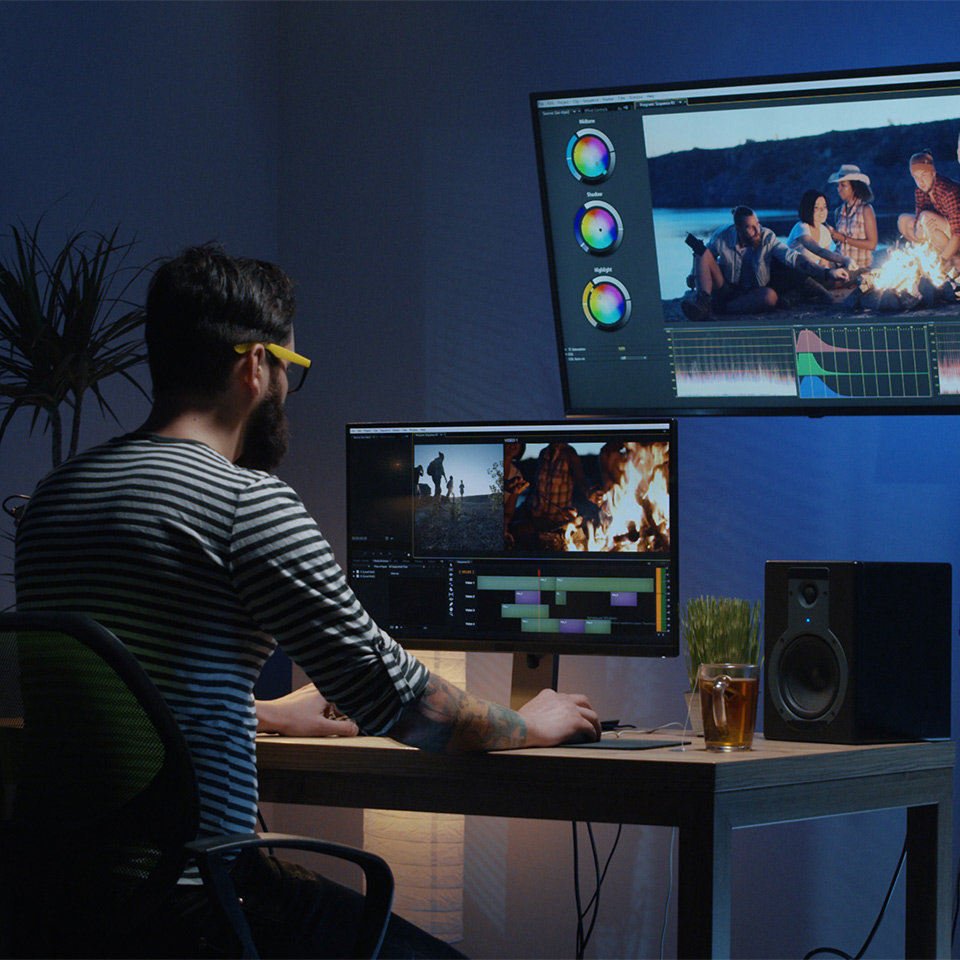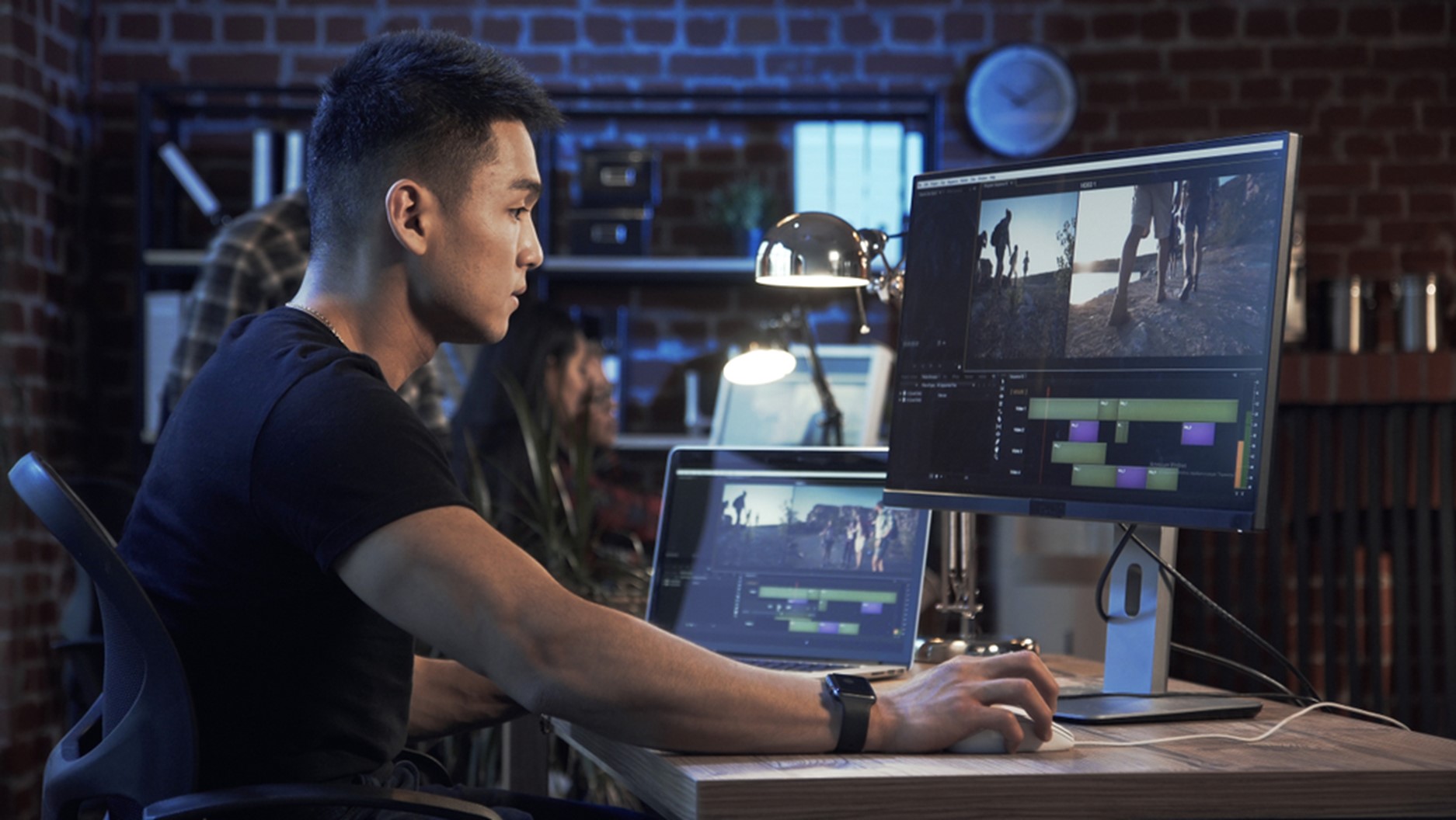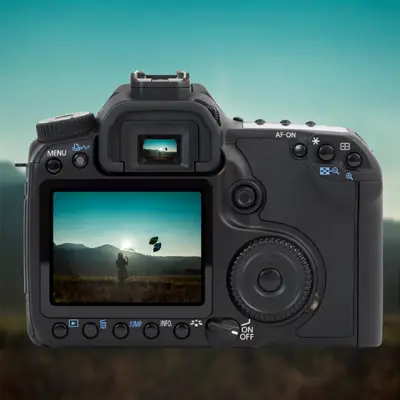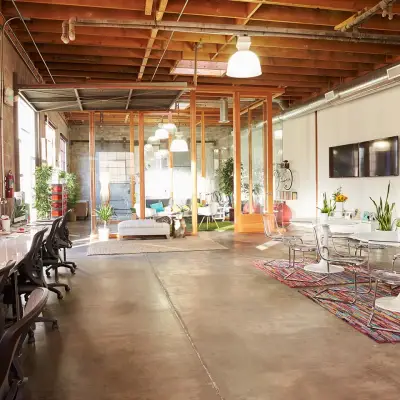Video editing is one of the quintessential components of video production. Without effective video editing, a video, film or television production will fall apart. Editing your footage is essential for keeping your audience engaged and entertained and ensuring continuity.

Jump to:
The practice of video editing is a multifaceted discipline, enabling you to indulge in your creative side as well as requiring a certain level of technical prowess. If you are completely new to video editing, it’s quite easy to feel overwhelmed initially. The potentially convoluted nature of an editing software’s interface and the technical jargon being used can make video editing seem more daunting than it actually is.
Because of that, we’ve put together a rough guide to video editing to help you understand some of the basics. Let’s look at some of the best video editing tips for beginners.
Recommended for you!
Best SellersWhy Is Video Editing Important?
An unedited video is like a tennis court without the net in the middle; it can serve a very basic purpose but it just doesn’t function correctly. If you don’t edit your video, it can give off the impression that your content is unprofessional and amateurish.
About 3.7 million videos are uploaded to sites like YouTube every day. This means it’s extremely important to stand out from the crowd, and you won’t achieve that if your video is not well-edited.
Choose The Right Software
The first step towards becoming a video editing guru is to find the software that best suits you and your work. There are many different choices of software out there, all of which offer the basic video editing functionalities with slightly different user interfaces and features. The key to choosing the right software is finding one that best suits your editing style instead of the latest, most advanced editing program. Choosing the right software can greatly impact your efficiency as a video editor.

Here’s a quick breakdown of some of the most popular video editing software options:
Adobe Premiere Pro
Level: Immediate to Advanced
One of the most popular examples of video editing software, Adobe Premiere Pro is part of Adobe’s Creative Cloud Suite. It’s a very powerful and professional video editing software that’s widely used in the film industry. While it offers a comprehensive set of features, it can be challenging for beginners due to its complexity and extensive toolset. This makes it more suited for immediate users or for those with strong technical knowledge.
Final Cut Pro
Level: Immediate to Advanced
Final Cut Pro is Apple’s premium editing software. It features advanced editing tools, effects, and powerful performance, all with a user-friendly interface. The software has been used to edit many Hollywood films and is the go-to program for serious hobbyists and indie filmmakers. While it is a little more beginner-friendly than Premiere Pro, it’s still better suited to those of intermediate and advanced skill levels.
iMovie
Level: Beginner
From one Apple software to another, iMovie is perfect for complete video editing novices and casual users. The user-friendly interface offers simple editing tools that are great for basic video projects. The software’s features include basic trimming, transitions, titles and effects.
Windows Movie Maker
Level: Beginner
Some would say that Windows Movie Maker is Windows's answer to Apple’s iMovie. The software is perfect for straightforward editing, with many easy-to-use tools such as simple transitions and effects.
DaVinci Resolve
Level: Intermediate to Advanced
DaVinci Resolve operates in quite an unusual space as far as video editing software is concerned. There are basically two versions of the software; a paid version and a free version. The free version is more suited to those of an intermediate level, whereas the paid version is tailored to those with an advanced skill set. Regardless of the version you’re using, the software is a professional-grade editing and colour-correction tool with unique audio post-production capabilities.
While these 5 options are some of the most popular video editing tools, there are also others available, including Avid Media Composer, Adobe After Effects and Adobe Premiere Rush. When you’re choosing the right software, the most important thing is to find something that suits your capabilities and allows you the creative freedom to produce a high-quality video.
Use A Fast Computer
Something that’s non-negotiable when it comes to video editing is having a fast computer. While you can technically make do with a computer that’s not very powerful, it can significantly slow your creative process, not to mention making the process of video editing much harder than it needs to be.
It doesn’t matter if you’re using a PC or MAC as long as the system is fast enough to store huge files, allowing you to focus more time on your editing work. We strongly advise you to invest in a faster storage drive, or solid-state hard drive (SSD). This will allow you to access files and software faster and speed up the rendering, loading and export process. Anyone who has used a slow computer to edit videos will tell you that waiting for a subpar system to render and export your footage takes an eternity!
If you are going to be doing professional or commercial work, it’s also advisable to increase your computer’s memory (or RAM) to at least 8 GB. You should complement this by getting a video card and processor for your editing software. This will significantly shorten the time you spend editing and make the process much easier.
It’s worth noting that sometimes it’s easier to upgrade the specifications of a PC, but Apple computers may be more powerful right off the bat. You must also ensure that your chosen editing software is compatible with the type of computer you have.

Learn Some Important Terms
If you’re a complete beginner to video editing or you want to take your skills to the next level, then learning some important editing terms will be beneficial. We aren’t saying that you need to become a film professor or the next Sally Menke, but understanding a few key terms and concepts will help you when editing.
Some key video editing terms you may wish to learn include:
Jump Cut
An edit to a single, sequential shot that makes the action appear to have leapt forward in time.
Match Cut
Match Cut is a technical term for when you cut from one scene to a different one, but have objects in the two scenes "matched," so that they occupy the same place in the shot's frame.
Match Action
A match on action (also known as “cutting on action”) is an editing technique where the editor cuts from one shot to another view that matches the first shot's action. The cut happens in the middle of the action, making it appear continuous and fluid.
L Cut
An L cut (also known as a “split edit”) is a technique where the audio from clip A continues to clip B, even though the video from clip A can no longer be seen. This means that, while you can’t see what’s happening in clip A, you can still hear it in clip B.
J Cut
A J cut is where the audio from clip B plays over clip A, before clip B has even come on screen. You therefore hear what’s happening in clip B before you see it, creating an overlapping effect where the upcoming audio leads the visual transition.
Montage
Regardless of whether you have any video or film editing knowledge, you’ll have heard of the term “montage”. To put it simply, a montage is a sequence of clips showcasing the passage of time, usually for a transformation reason, to showcase character development or to progress the narrative in some way.
Utilise Shortcuts
Shortcuts are useful whenever you’re using a computer. Utilising shortcuts can help to make you work more efficiently and increase your productivity. The shortcut may vary from program to program, but some of the most popular shortcuts include control+C (which is used for the cutting tool) and control+V (which is used for the select tool) on Premier Pro, and control+B for the blade tool and control+A for the select tool on Final Cut Pro.
If you have a bit more budget to spare, you could consider buying an editing keyboard or a replaceable keyboard cover with pre-printed shortcut icons. These are usually designed for specific types of software, ensuring compatibility with your editing programs.

Obey The 3-2-1 Rule
A lot of aspiring video editors don’t know about the 3-2-1 rule! The 3-2-1 rule, attributed to photographer Peter Krogh, instructs that you should keep 3 copies of data - the original, and at least two copies in two different places. This rule is used in other industries too. For example, many woodworkers learn to measure a piece of wood twice and cut it once.
The 3-2-1 rule is particularly handy in the video editing industry as it’s so easy to lose edits you have made. As such, it’s always advised to keep 3 copies of everything you create, in at least 2 different places, with 1 of those places physically separated from your other locations.
Use The Right Transition- Or None At All
Transitions are one of the simpler aspects of video editing. However, mastering transitions is not so simple.
If you’re transitioning from one clip to another, there is a high probability that you won’t need to apply transitions. But sometimes, transitions are essential. The transition you require can vary greatly depending on the type of video you are editing. For example, if you are editing a YouTube video, you may want to use a transition such as a swipe. This can be a creative and ‘quirky’ way of transitioning from one scene to another and is a popular transition for ‘haul videos.’
If your video is more narrative-driven, your transition options will be more limited. Most of the time, you won’t need to use a transition, but if you do, try to stick to crossfades or dissolves, these are typically only used to showcase the passage of time and should not be used flippantly.
Knowing which transitions to use and when to deploy them requires prior research and a lot of revision before you complete your video. If you’re still unsure, it’s always wise to either watch tutorials or ask colleagues for help.

Video Editing Includes Sound Editing
Video editing involves more than just editing raw footage. Although it’s not as widely known to video editing novices, mastering sound editing is part of video editing 101. To put it simply, audiences won’t watch your video if the audio is of low quality!
Many types of editing software allow you to detach the audio from the footage, meaning you can zoom and ensure the audio upholds even close scrutiny.
Ensure your audio tracks are balanced, allowing dialogue to be prominent and avoiding abrupt volume shifts. Use split edits, such as J-cuts, to seamlessly transition audio between different clips or scenes. To enhance audio quality, it’s also advised to invest in a quality external audio recorder, like the Zoom H1n.
Project Files
Generally speaking, being organised can make life easier, and this is no different for video editing. When starting your project, you should set up dedicated folders for your various projects, and use subfolders for specific footage, audio clips or graphics.
We won’t overcomplicate matters by telling you exactly how to organise your footage; the most important thing is that the project is organised to make accessing and finding your files easier.
Watch Tutorials
Sometimes, watching tutorials is one of the most effective ways to learn when it comes to video editing.
No matter what your issue may be, whether it’s that you don’t know how to export a file correctly or you don’t know how to colour-correct your footage, there will likely be a tutorial out there that can help. One of the many positives of online tutorials is that you don’t have to commit to a full class over an extensive period of time, meaning you can learn what you need to and carry on editing. This can help to make you work more efficiently.
Edit For Story
When editing, it can become easy to forget the creative goal of your project which, more often than not, is to tell a story. Editing for a story requires that you use your technical knowledge and creative acumen to best fit the story you want to tell.
You should go beyond the basics, such as continuity edits and audio matching, to take this opportunity to show how effective you are at storytelling. Whether you want to showcase your aesthetically pleasing cinematography or you are illustrating your technical ability by producing a non-chronicle narrative, editing for a story is essential if you want to get better at video editing and develop as a storyteller.
Add Graphics If Needed
Depending on the type of video you are editing, you may have to add graphics. Regardless of whether you are editing a Hollywood film or a homemade passion project, you will likely need to include opening and closing titles or credits. Consistency is key when it comes to choosing your preferred font. Not only should the font for your opening and closing credits match, but it should also be in keeping with the style and genre of your work. For example, if the video you are editing is an informative piece or a serious narrative, you should use fonts which aren’t outlandish and detract from your video.
You may need to use graphics during your video beyond the opening and closing titles. Examples of this include texts that demonstrate a place name or time of an event in a film, or graphics illustrating product details in a video. Again, consistency is key. You must ensure that your font matches the fonts you’ve used previously and that they’re in keeping with the style of your video.
If you need to incorporate more flashy graphics, you can create them using your editing software. Adobe After Effects is a popular option for producing high-quality motion graphics. If you haven't learned to create your own from scratch, you can find impressive ready-made After Effects templates on RocketStock.

Colour Correcting
Colour is a major design element in video editing. It can be manipulated and changed in numerous ways to highlight certain subjects, evoke emotion and set the mood of a scene. Colour can also be used for narrative purposes: think about how flashback scenes in films are always a different colour from footage from the rest of the film. Luckily, many examples of modern video editing software provide many colour editing options.
Most editors do two things. One is colour correction, which ensures the colour of your footage is consistent throughout different scenes, and the second is colour grading, which gives your video a different look. Both techniques are essential for getting the most out of your video.
Learn More About Video Editing With Centre of Excellence
If you’ve been wondering how to get started with video editing or you simply want to refresh your skills, why not enrol in our Video Editing Diploma Course? It’s available for the discounted price of £29, instead of the original £127, so learning to video edit has just become more affordable.
There’s also the option of Grow: our subscription service. With Grow Yearly, just £192 per year (i.e. £16 per month) will get you full access to our video editing course plus 11 other courses from our wider library, as well as 12 audio courses! Grow also comes with an in-built 10% reduction on printed materials and certificates, plus exclusive discounts and reward points that you can redeem for fantastic prizes.
Before you know it, you’ll be editing videos like a pro.













